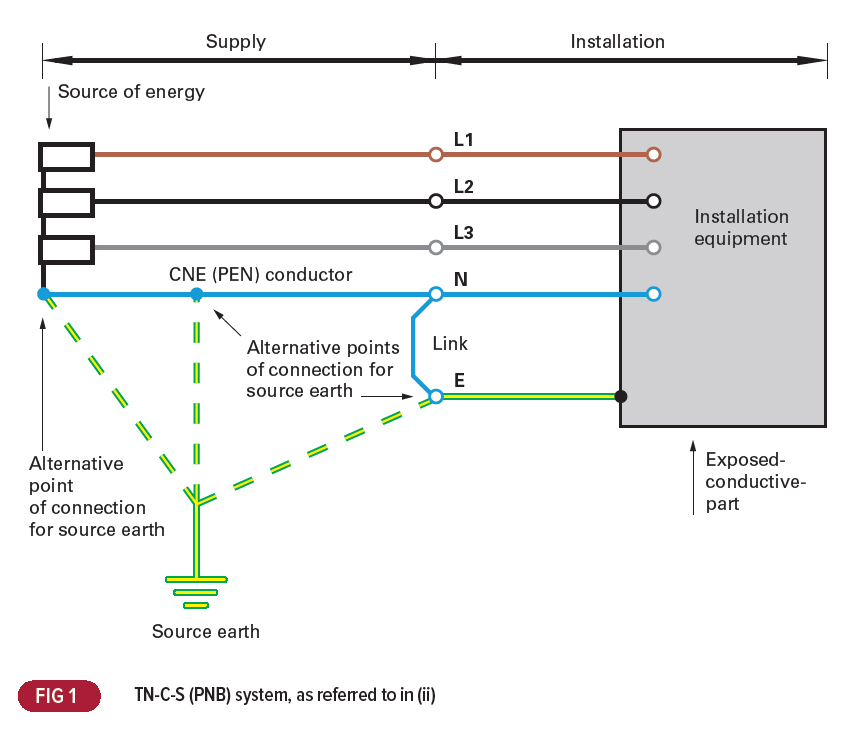Except for those requirements applying only to locations where livestock is kept, the requirements relating to agricultural and horticultural premises given in Section 705 of BS 7671 apply to the electrical installation in any greenhouse, whether it is a large commercial greenhouse or a small garden greenhouse.
Electrical installations in such locations are considered by BS 7671 to warrant special attention due to the increased risk of electric shock. The increased risk of electric shock in a greenhouse arises because there may be copious amounts of water in the form of spray and/or condensation, which can result in a reduction in body resistance (due to a person having wet clothing/ footwear and/or wet hands). Additionally, there is the probability that persons in greenhouses will be in direct contact with the general mass of Earth. In order to minimise the risk of electric shock, the relevant requirements prescribed in Section 705 have to be applied to electrical installations in greenhouses. Such requirements apply in addition to the general requirements contained elsewhere in BS 7671.
Protective multiple earthing (PME) supplies
Where the installation designer considers it inappropriate to connect exposed-conductive-parts and extraneous-conductive-parts of an installation in a greenhouse to the earthing terminal of a PME supply, or where the electricity distributor’s notes of guidance do not permit this, a number of alternative options may be available:
(i) TT system – the installation in the greenhouse has its own main earthing terminal (MET), to which the exposed-conductive-parts of the installation are earthed and the extraneous-conductive-parts are main equipotentially bonded. The MET is connected to Earth by an installation earth electrode. RCD protection will almost certainly be required in order for all circuits to satisfy:
RA x IΔn ≤ 50 V
Where RA is the sum of the resistances of the earth electrode and the protective conductor(s) connecting it to the exposed-conductive-part and IΔn is the rated residual operating current of the RCD (Regulation 411.5.3 refers).
(ii) TN-C-S (PNB) system – the supply transformer is dedicated to supplying a single installation only, the designer may adopt a Protective Neutral Bonding (PNB) form of TN-C-S system, where the neutral conductor of the supply is earthed via an earth electrode at a single point as shown in Fig 1. Where the transformer is not the property of the installation owner, the agreement of the Distribution Network Operator will need to be obtained before this option can be used.
(iii) Local TN-S system – where the supply transformer supplies a number of consumers’ installations, some of which make use of the PME supply earthing, a localised TN-S system may be derived from the supply through a suitable consumer’s isolating transformer, with the secondary winding earthed at its neutral or star point.
In either of options (i) or (iii), care needs to be taken that there is no electrical connection between the earthing terminal of the PME supply and exposed-conductive-parts and extraneous-conductive-parts of the greenhouse installation.
Additional protection for socket-outlets
Each final circuit supplying a socket-outlet rated at not more than 32 A, other than a SELV socket-outlet, must be provided with additional protection by means of an RCD (Regulation 705.411.1 refers). Additionally, in final circuits supplying socket-outlets with a rated current exceeding 32 A, an RCD must be supplied having a rated residual operating current not exceeding 100 mA.
Automatic Disconnection of Supply (ADS)
Where the metallic structural frame of the greenhouse is in contact with the ground, or is otherwise ‘earthy’, and the protective measure is Automatic Disconnection of Supply (ADS), the frame is required to be main equipotentially bonded to the MET of the greenhouse electrical installation, as called for in Regulation 411.3.1.2, with the protective bonding conductor(s) being sized in accordance with Regulation 544.1. Where there are fixed metallic benching units bolted to the metal framework of the greenhouse, which is in contact with Earth, they have become extraneous-conductive-parts. Such equipment must be effectively bonded to the MET.
Where the metallic benching units are free standing on decking or other floor material, and not making good contact with the general mass of Earth, they are not considered to be an extraneous-conductive-part, and therefore protective bonding is not required.
Where portable electrical equipment is to be used on or close to the metallic benching units, additional protective measures have already been taken by the use of 30 mA RCDs protecting final circuits supplying socket-outlets (Regulation 705.411.1 refers).
Double or reinforced insulation
Protection of an entire installation by the use of the protective measure double or reinforced insulation in accordance with Section 412 may be employed in certain circumstances. However, this may only be done where it has been verified that the installation will remain under effective supervision during normal use so that no change is made that would impair the effectiveness of the protective measure (Regulation 412.1.3 refers) this is unlikely to occur in a domestic setting and should be avoided.
However, fault protection can still be achieved by the use of individual items of Class II equipment, and this is usually the preferred option for such locations.
A greenhouse is a particularly harsh environment for equipment, subjected as it is to water, water-based chemical spraying, and other uses of water to aid the growing process. Together with elevated temperatures as a consequence of heaters and/or solar gain, high levels of humidity are often experienced which may lead to deterioration of equipment by corrosion and possibly electrolytic action. Careful selection of equipment and its positioning is therefore necessary to reduce deterioration.



